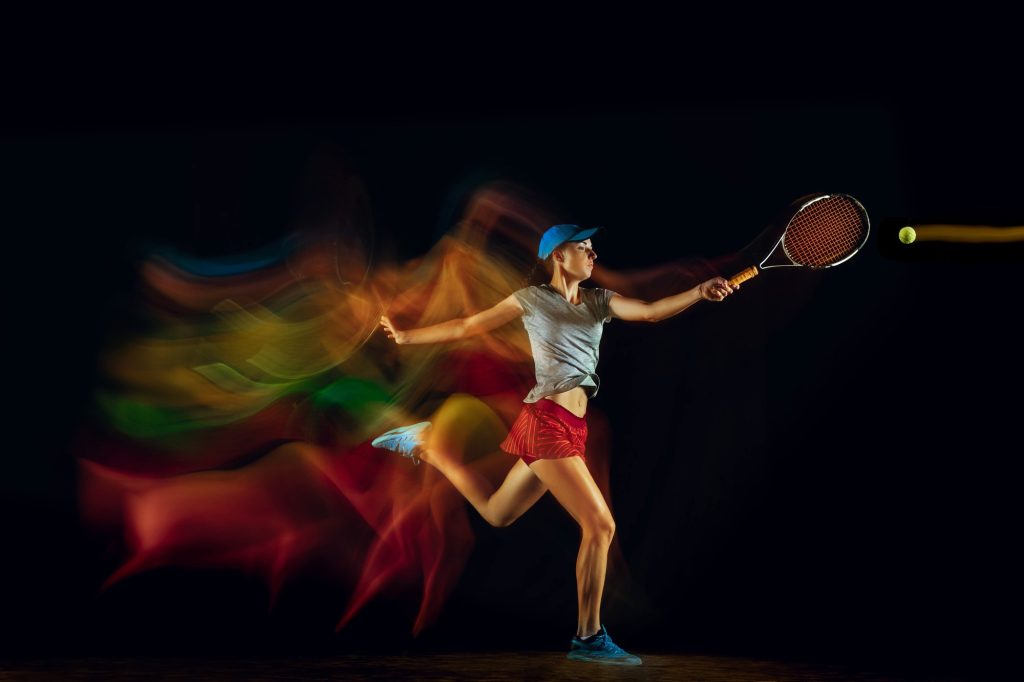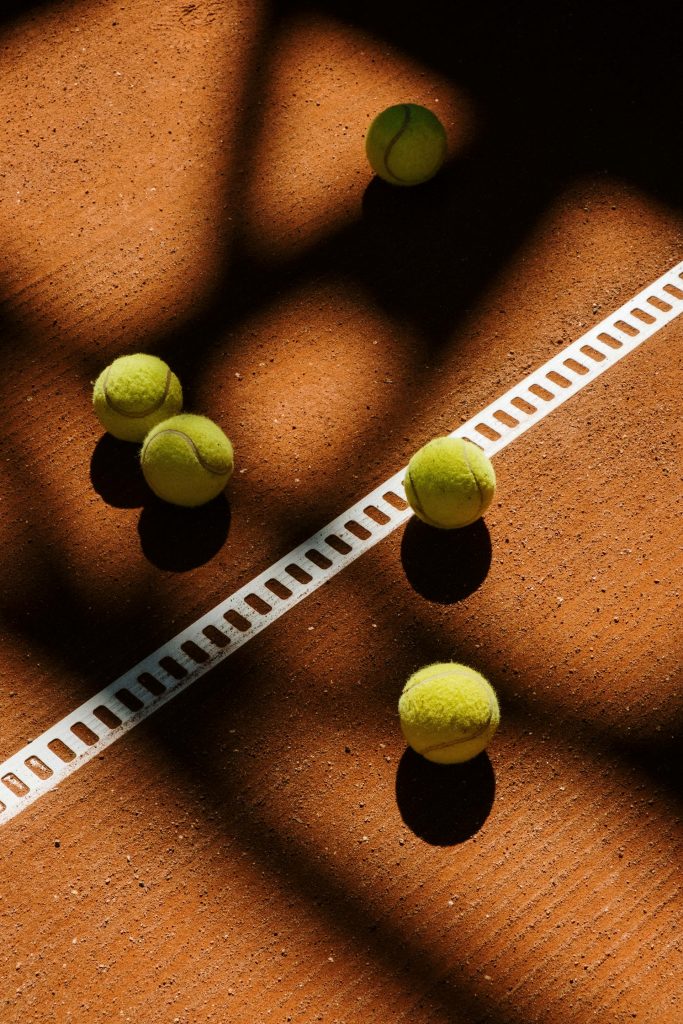Tennis has always been a game of margins. The great players throughout history have had to rely on split-second decision making, honed reflexes, and strategic adjustments to gain a competitive edge. But artificial intelligence (AI) is set to change the status quo. From sensors and biomechanical tracking to predictive analytics, AI innovations are empowering the next generation of tennis stars with an unprecedented information advantage.
The Possibilities of Tracking and Analysis
One major area where AI is making inroads is through granular motion tracking and analysis. Systems like PlaySight utilize multi-angle cameras and computer vision algorithms to capture a player’s full body movement on court. Advanced swing analysis can reveal performance weaknesses related to stroke mechanics, footwork, balance and more.
But it goes beyond just diagnosis. Combining tracking data with predictive modeling helps optimize training to target specific improvement areas. For example, biomechanical load monitoring through smart apparel can mitigate injury risk by detecting muscle fatigue and tweaking schedules accordingly. This has prolonged careers of veteran Tour professionals using these techniques.
AI has also enhanced strategic scouting and game prep. Using machine learning on millions of historical match statistics and patterns, players can now understand an opponent’s go-to shots in high pressure situations. The algorithms can even recommend tactical adjustments catered to a rival’s strengths and weaknesses. Top players have started integrating these analytic strategy briefings into their pre-match routines with demonstrated success.
Democratizing Access for Recreational Players
Professional tennis has seen the most aggressive adoption of AI so far. But a new wave of virtual training tools and sensor-enabled gear has opened the door for recreational players to reap the benefits too. Apps like SwingVision leverage on-court video captured through mobile phones and automatically generate highlights, shot data overlays and personalized clip packages. This allows amateur players to easily self-diagnose problem areas in their game.
Consumer racquet companies like Babolat have also jumped on board by embedding internet-of-things sensors into handles which relay real-time feedback on swing metrics. Meanwhile, add-ons like Qlipp provide similar capability by clipping onto existing strings. The sensor pairing and analysis capabilities from these tools once required expensive proprietary systems. But Goal AI and connectivity advancements have democratized access.
Recreational players can now also simulate match scenarios against tennis greats through VR training tools like Sense Arena. The software extrapolates play style patterns of legends like Federer and Williams using AI to recreate their shot selection and positioning. Gamifying training through these simulations accelerates skill development.

The Virtual Linesperson Arrives
Amid shot tracking sensors and swing analyzers lies another major AI milestone – the virtual linesperson. Systems like Hawk-Eye Live use camera feeds and projection algorithms to deliver real-time automated line calls with incredible precision. The ATP tour is going to mandate this electronic line judging technology at all events, phasing out human line judges.
The technology still faces limitations, especially on clay courts where ball imprints are used for close calls. But ongoing R&D has enhanced accuracy within a millimeter. And AI’s consistency eliminates any home-crowd bias that may unconsciously impact human linespeople. Players now have added assurance on critical calls.
And for recreational play, the capabilities have trickled down to consumer devices as well. The Apple Watch’s new “Line Calls” feature leverages motion sensors to determine relative ball position for instant vibrational alerts on close line decisions. As consumer comfort increases with automated calls, adoption of the virtual linesperson will only accelerate.
Serving Up Game Insights for Fans
While AI has focused on augmenting players and coaches, its also enriching the observer experience. IBM has been at the frontier when it comes to extracting game insights for fans and journalists via Watson Discovery. The system ingests millions of articles to autogenerate pre-match briefings highlighting key player patterns, recent injuries, or strategic tendencies to watch for.
Match Insights even quantifies intensity by indexing crowd noise levels and player reactions. It then ranks the most thrilling highlights for post-game consumption. This AI-powered statistical storytelling enables more informed conversations for casual viewers.
And advances like Open Question with Watson further connects fans by crowdsourcing intriguing discussion prompts analyzed through natural language AI. Queries like “who has the most lethal forehand currently?” or “did the switch to plant-based diet actually help Djokovic?” create more engaging dialogue. The technology identifies these fan submitted questions automatically and surfaces the most thought-provoking ones.

Protecting Players from Abuse
However, while AI has unlocked manifold innovations to help those on and off court, its also been leveraged in other ways. A particularly important application has involved using machine learning algorithms to filter social media platforms and block abusive comments directed towards players.
Tournaments like the French Open have specifically rolled out AI moderation tools to protect athletes from the unfortunately growing vitriol online. By working with linguists to create filtering rules continuously updated through deep learning, the technology has allowed players to engage fans online positively without compromising their mental health.
The Path Forward
As these examples demonstrate, tennis is truly embracing a technology-empowered future through AI across all stakeholder groups – players, coaches, fans, equipmakers and more. Systems that were once only privy to the professional circuit are now gradually improving grassroots participation. Tech adoption will only accelerate as capabilities improve and costs lower.
That said, certain limitations around small datasets still constrain AI feasibility. Collecting sensor tracking information across thousands of matches is still an arduous task compared to major team sports. And strategic modeling is confined to mostly top tier competitions.
Regardless, early successes have laid the blueprint for AI innovation in tennis. Smarter equipment and virtual training will soon be the norm. Enhanced analytics will sharpen decision making. And fan engagements will enter new dimensions through data storytelling. When complementing human insight, there is plenty of room for technology to elevate performance, access and experience – the cornerstones growing the sport.

So while the psychological battle between the lines will always hinge on the players, AI assistance now provides that additional edge to come out on top more consistently. Technology promises to improve all factions of the beautiful game. The only question is, who will push the boundaries first?
Copyright©dhaka.ai
tags: Artificial Intelligence, Ai, Dhaka Ai, Ai In Bangladesh, Ai In Dhaka, USA



